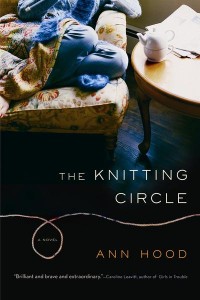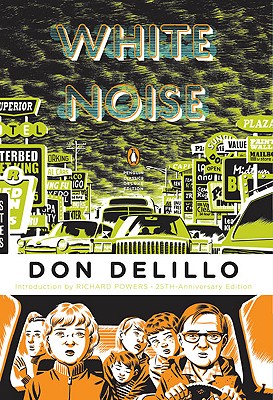 With all the posts on lectures and readings, you may be surprised to hear that we had any time to workshop at the conference at all. I was very lucky to be in Ann Hood’s workshop, as Ann offered specific concrete approaches to thinking about plot, theme, tension, and all of those nebulous concepts fiction writers have to deal with. We had a lot of novel excerpts in the class, so much of the workshop discussion focused on issues of the novel rather than the short story—a change from the norm.
With all the posts on lectures and readings, you may be surprised to hear that we had any time to workshop at the conference at all. I was very lucky to be in Ann Hood’s workshop, as Ann offered specific concrete approaches to thinking about plot, theme, tension, and all of those nebulous concepts fiction writers have to deal with. We had a lot of novel excerpts in the class, so much of the workshop discussion focused on issues of the novel rather than the short story—a change from the norm.
Fellow Bread Loafer Eugene Cross has written an account of his workshop with Charles Baxter, and I admired this post and Eugene’s thoughtfulness so much that I’d like to emulate it here.

Ann Hood
So, here’s a smattering of the wisdom of Ann Hood’s workshop:
1. Stories need a sense of gravitas or emotional weight. Obvious, right? But how do you know if your stories have it or not? In writing a story, a writer should answer three questions:
- What if? This takes you away from the seed of the story—especially if it’s based in a real occurrence—and into the realm of the hypothetical (i.e., the fictional).
- Then what? This question forces you to think about plot: what happens next?
- So what? This question tests the story for thematic weight. If the writer can’t answer this question, the story probably doesn’t have enough emotional impact, and it won’t matter to the reader.
2. A good first chapter should introduce the protagonist, ground us in the story by revealing the setting, present the main conflict, and introduce the theme of the novel. Sounds like a lot—but Ann brought us the opening pages of three novels: Extremely Loud & Incredibly Close by Jonathan Safran Foer, The Dogs of Babel by Carolyn Parkhurst, and Last Night at the Lobster by Stuart O’Nan. And indeed, just from looking at those first four or five pages, you could in fact identify the main character, the setting, the main conflict, and the theme. (Try it yourself at home—this exercise is truly eye-opening.)
Ann also gave us a great quote from Margaret Atwood, which I’ll paraphrase here: The first page of a story is like a train. From there, you can decide whether to stay on or get off. But if you don’t even know where the train is going, you probably won’t stay.
3. Prologues are tricky. To justify its existence, a prologue needs to give crucial information—readers may not know why it’s important at the time, but they should need this information for context later. At the same time, a prologue should be distinct from the chapters that follow: it should have a different style, a different setting, a different voice, and/or a different form (especially a non-narrative form, such as a newspaper clipping, a report, etc.) that prevents it from being Chapter 1 or part of Chapter 1. If your prologue doesn’t fit both of these requirements, it probably isn’t a prologue—it may need to be part of Chapter 1, or it may not be needed at all.
4. Beginnings and endings are the exciting parts, but middles are where the work of the book takes place. Again, obvious, right? But as any novelist can tell you, it’s hard to keep that middle from sagging. You must be sure to give your reader facts as you progress so that they can grow emotionally and discover truths along with the characters. Ann handed out random excerpts from the middles of the three novels we’d looked at earlier, and again, you could see the conflict and theme being restated, but with new information added. (Again, try this at home with some of your own favorite novels.) The whole thing reminded me of a piece of music: the theme of the piece is repeated throughout, but with a variation or development that makes it more complex.
5. Ann has a “system” for testing the tension in your story—I put it in quotes because that’s her own word for it. Break the novel (or story) into scenes. Decide whether each scene starts on a positive note (+) or a negative note (-)and whether it ends on a positive note or negative note. Then look at your overall pattern of pluses and minuses. Tension is caused by movement from positive to negative within a scene, or vice versa: “We finally went on vacation (+) … but then we had an argument (-),” or “I’m at a friend’s funeral (-) … but I reconnected with an old flame there (+).” Too many pluses and minuses in a row suggest a lack of tension.
 Ann also offered another way to think about this: some scenes are hot (arguments, action, etc.) and some are cool (thinking, waiting, etc.) Readers can’t take too many “hot” scenes or “cool” scenes in a row—you need to mix it up a little in order to create tension.
Ann also offered another way to think about this: some scenes are hot (arguments, action, etc.) and some are cool (thinking, waiting, etc.) Readers can’t take too many “hot” scenes or “cool” scenes in a row—you need to mix it up a little in order to create tension.
I found this workshop incredibly useful on two different levels. First, as a writer, I’m struggling with some of these issues in my own work—especially how to maintain tension throughout a novel! And second, as a teacher, I’m excited to have some new ways of looking at these questions and new tools to offer my students. Thanks, Ann.





